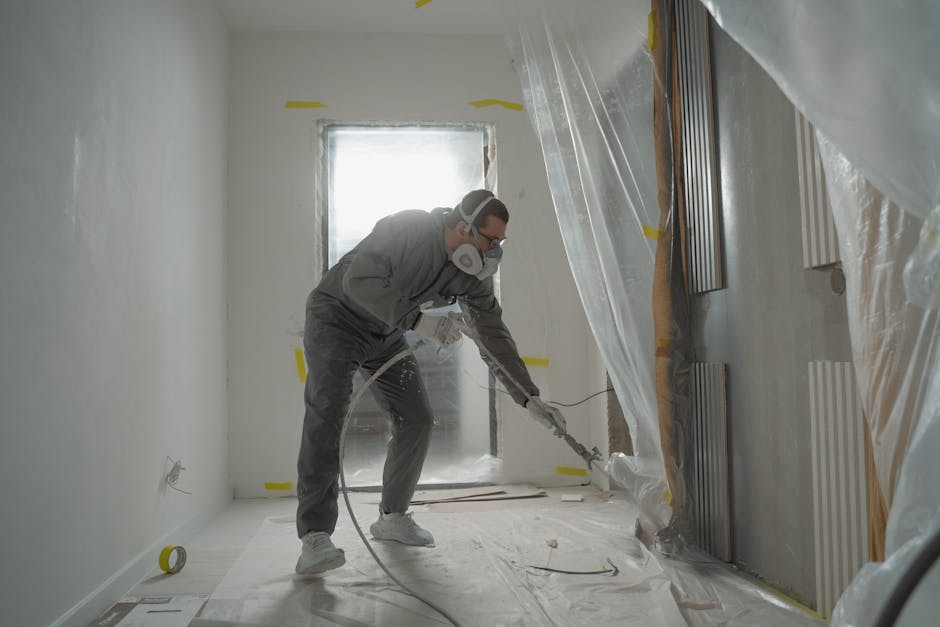The entrance to a home, the foyer, speaks volumes. It’s the initial handshake with every visitor, a transition zone from the external world to your personal sanctuary. However, what happens when your foyer is, well, odd? Awkward angles, wasted space, and a general sense of disharmony can plague these transitional areas. Fear not; even the most peculiar foyer can be sculpted into a functional and aesthetically pleasing introduction to your home. Think beyond the typical console table and mirror; your oddly shaped foyer is begging for creative solutions. Let’s consider form and function in the grand scheme of interior design, shall we?
Understanding Your Foyer’s Challenges
Before wielding a sledgehammer (or even a measuring tape), really see the space. What makes it odd? Is it a narrow hallway that stretches too long? A strangely angled corner? Perhaps an abundance of doors leading in various directions disrupting the flow. Pay attention to existing architectural details. A low ceiling might preclude a grand chandelier, while exposed brick could inform a rustic design aesthetic. And lighting, oh the lighting! Is it dismal and dark? Or overly bright and harsh? Understanding the challenges are the first step to finding solutions.
- Analyze the traffic flow: Where do people naturally walk upon entering?
- Identify the focal point (or lack thereof).
- Note any architectural quirks.
- Determine natural light sources.
Ignoring these elements is like trying to bake a cake without a recipe; the results are likely to be disappointing.
Dealing with Angular Walls
Angular walls often present the greatest difficulty. They can make furniture placement a nightmare and lead to dead corners that collect dust bunnies. One approach is to embrace the angles. Custom millwork designed to fit snugly against the wall can transform an awkward corner into a useful storage or display space. Think built-in bookshelves, a coat rack perfectly molded to the wall shape, or even a small seating area. The key here is to make the unusual shape feel intentional, a carefully considered design choice rather than an oversight.
Another strategy involves softening the angles. Curved furniture or strategically placed plants can visually soften the harsh lines of angular walls. Use mirrors to reflect light and visually expand the space. Don't be afraid to experiment with different textures and patterns to distract from the odd shape.
Conquering Narrow Foyers
Narrow foyers often feel claustrophobic and unwelcoming. The goal here is to create the illusion of space. Light colors are your friend. Paint the walls a light, airy hue to make the space feel larger. Use vertical stripes on the walls or a tall, narrow mirror to draw the eye upward. Avoid clutter, which will only accentuate the narrowness of the space.
Thin console tables or floating shelves provide storage without taking up too much floor space. Wall-mounted lighting frees up valuable floor space and provides ample illumination. Also, consider using a runner rug to visually lengthen the foyer. If there is a tight turn consider installing banquette seating with integrated storage underneath. This creates a place to pause to sit down and take shoes on and off, but the integrated storage really will help with not having clutter around.
Tackling Oversized Foyers That Lack Purpose
Surprisingly, large foyers can also pose a design problem. They can feel empty and cavernous if not properly furnished. The key here is to define zones within the space. Create a distinct entry area with a console table, mirror, and perhaps a bench. Add a seating area with comfortable chairs and a small table. A large rug can help to ground the seating area and define its boundaries.
Another idea is to create a gallery wall featuring artwork or photographs. This will add visual interest and make the space feel more personal. Don't be afraid to use large-scale furniture to fill the space. A grand chandelier or a statement piece of art can help to anchor the foyer and make it feel more inviting.
Maximizing Functionality
A foyer is more than just a pretty face; it's a workhorse that needs to handle a variety of functions. It's a place to store coats, shoes, and umbrellas. It's a place to drop mail and keys. It's a place to greet guests. When remodeling an oddly shaped foyer, it's crucial to think about how you can maximize its functionality without sacrificing style.
Smart Storage Solutions
Storage is key in any foyer, but especially in an oddly shaped one. Built-in storage is often the best option for maximizing space. Consider a custom-built mudroom bench with storage underneath, or a tall, narrow cabinet for storing coats and shoes. Wall-mounted shelves can provide additional storage without taking up valuable floor space.
Hidden storage is also a great option for keeping clutter out of sight. Ottomans with hidden storage compartments, or benches with lift-up seats, can provide a convenient place to store items while also providing seating. Don't forget about vertical space! Tall, narrow shelves can be used to store books, plants, or decorative items.
Creating a Welcoming Atmosphere
A foyer should be a welcoming space that makes guests feel comfortable and at ease. This means paying attention to lighting, color, and texture. Use warm, inviting colors on the walls and floors. Add soft, comfortable rugs to create a cozy feel. Provide ample lighting to make the space feel bright and airy.
Personal touches can also help to make a foyer feel more welcoming. Display family photos, artwork, or other items that reflect your personality. Add plants to bring a touch of nature indoors. A well-placed mirror can help to reflect light and make the space feel larger.
Incorporating Technology
In today's digital age, technology can play an important role in the foyer. Consider adding a smart doorbell with a video camera, so you can see who is at the door before you answer it. Install smart lighting that can be controlled remotely. Add a charging station for phones and other devices.
A digital display can be used to display artwork, photographs, or even weather information. A smart speaker can be used to play music or provide information. These technological additions can elevate a foyer from a mere transition space to a modern, connected hub.
Aesthetic Considerations
While functionality is important, the aesthetic appeal of your foyer shouldn't be ignored. The foyer sets the tone for the rest of your home, so it's important to create a space that reflects your personal style.
Color Palette and Materials
The color palette and materials you choose for your foyer will have a big impact on its overall look and feel. Light colors can make a small space feel larger, while dark colors can create a sense of drama and sophistication. Natural materials, such as wood, stone, and brick, can add warmth and texture to the space.
Consider the architectural style of your home when choosing colors and materials. A modern home might benefit from a minimalist color palette and sleek, modern materials. A traditional home might benefit from warmer colors and more ornate details.
Lighting Design
Lighting is crucial in any space, but especially in a foyer. A well-lit foyer will feel more inviting and welcoming. Consider using a combination of ambient, task, and accent lighting to create a layered lighting scheme.
Ambient lighting provides overall illumination and can be achieved with a ceiling fixture or recessed lighting. Task lighting provides focused light for specific tasks, such as reading or writing. Accent lighting is used to highlight artwork or architectural features.
Artwork and Accessories
Artwork and accessories can add personality and visual interest to a foyer. Choose pieces that reflect your personal style and complement the overall design of the space. A large piece of art can serve as a focal point, while smaller pieces can be used to add pops of color and texture.
Mirrors can be used to reflect light and make a small space feel larger. Plants can bring a touch of nature indoors. Rugs can add warmth and texture to the floor. Don't be afraid to experiment with different accessories to create a space that is uniquely your own.
Common Mistakes to Avoid
Remodeling an oddly shaped foyer can be a challenging task, and it's easy to make mistakes along the way. Here are some common mistakes to avoid:
- Cluttering the space with too much furniture.
- Using dark colors that make the space feel smaller.
- Ignoring the architectural details of the space.
- Choosing lighting that is too harsh or too dim.
- Forgetting about storage.
- Not considering the traffic flow.
- Being afraid to experiment.
- Buying too much or the wrong size rugs.
- Not thinking about the overall design of the home.
- Hanging art at the incorrect heights.
The Finished Product
So, you have an oddly shaped foyer. Now what? Well, with careful planning, a touch of creativity, and a willingness to embrace the quirks, you can transform it into a functional and aesthetically pleasing introduction to your home. Remember to analyze the space, maximize functionality, and pay attention to aesthetic considerations. Avoid common mistakes, and don't be afraid to experiment. With a little bit of effort, your oddly shaped foyer can become a point of pride, a space that not only welcomes guests but also reflects your unique personality and style. The end result is not just a remodeled foyer; it's a new perspective, a new beginning, and a new way to experience the transition between the outside world and your personal sanctuary.







